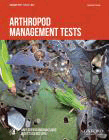Wires_Guy_wires
Imperial Masterpiece
After using neem oil, pyrethrins, and two different types of systemics aimed at aphids, oil based insecticides, soapwater and ethanol.. They're still alive and thriving on my houseplants.
The bugs don't bother me much but the sticky honeydew they excrete is taking a toll on the floor and the windowsill. I mop up a sugary mixture twice a week and I'm getting tired of it.
I'm looking for alternatives to knock them out for good. Preferably something environmentally safe, but I'm prepared to pull out the big guns as well.
Have you ever gotten rid of them, and if yes, how?
The bugs don't bother me much but the sticky honeydew they excrete is taking a toll on the floor and the windowsill. I mop up a sugary mixture twice a week and I'm getting tired of it.
I'm looking for alternatives to knock them out for good. Preferably something environmentally safe, but I'm prepared to pull out the big guns as well.
Have you ever gotten rid of them, and if yes, how?



